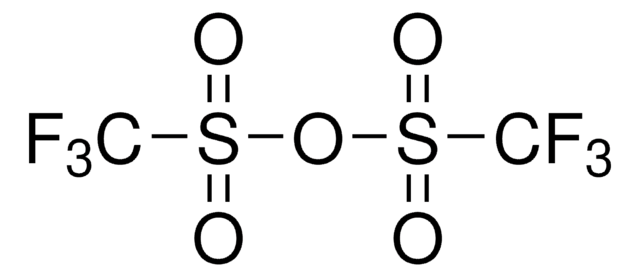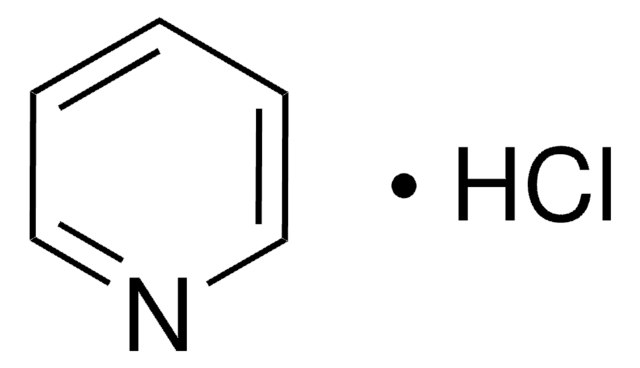About This Item
Recommended Products
grade
anhydrous
Quality Level
vapor density
2.72 (vs air)
vapor pressure
10 mmHg ( 13.2 °C)
20 mmHg ( 25 °C)
Assay
99.8%
form
liquid
autoignition temp.
899 °F
expl. lim.
12.4 %
impurities
<0.003% water
<0.005% water (100 mL pkg)
evapn. residue
<0.0005%
color
colorless
refractive index
n20/D 1.509 (lit.)
pH
~8.81 (20 °C)
bp
115 °C (lit.)
mp
−42 °C (lit.)
density
0.978 g/mL at 25 °C (lit.)
SMILES string
C1=CN=CC=C1
InChI
1S/C5H5N/c1-2-4-6-5-3-1/h1-5H
InChI key
JUJWROOIHBZHMG-UHFFFAOYSA-N
Looking for similar products? Visit Product Comparison Guide
General description
Application
- Alkyltrichlorosilanes to trimethoxyalkylsilanes, which are used as precursors for preparing alkylsilicates.
- 1-Indanone to 1-indanone oxime, which can undergo reductive ring-expansion to form tetrahydroquinoline.
It may also be used to catalyze the borylation reaction of haloarenes to form arylboronates without using transition metal catalysts.
Packaging
also commonly purchased with this product
related product
suggested gloves for splash protection
Signal Word
Danger
Hazard Statements
Precautionary Statements
Hazard Classifications
Acute Tox. 4 Dermal - Acute Tox. 4 Inhalation - Acute Tox. 4 Oral - Eye Irrit. 2 - Flam. Liq. 2 - Skin Irrit. 2
Storage Class Code
3 - Flammable liquids
WGK
WGK 2
Flash Point(F)
68.0 °F - closed cup
Flash Point(C)
20 °C - closed cup
Personal Protective Equipment
Choose from one of the most recent versions:
Already Own This Product?
Find documentation for the products that you have recently purchased in the Document Library.
Customers Also Viewed
Our team of scientists has experience in all areas of research including Life Science, Material Science, Chemical Synthesis, Chromatography, Analytical and many others.
Contact Technical Service







